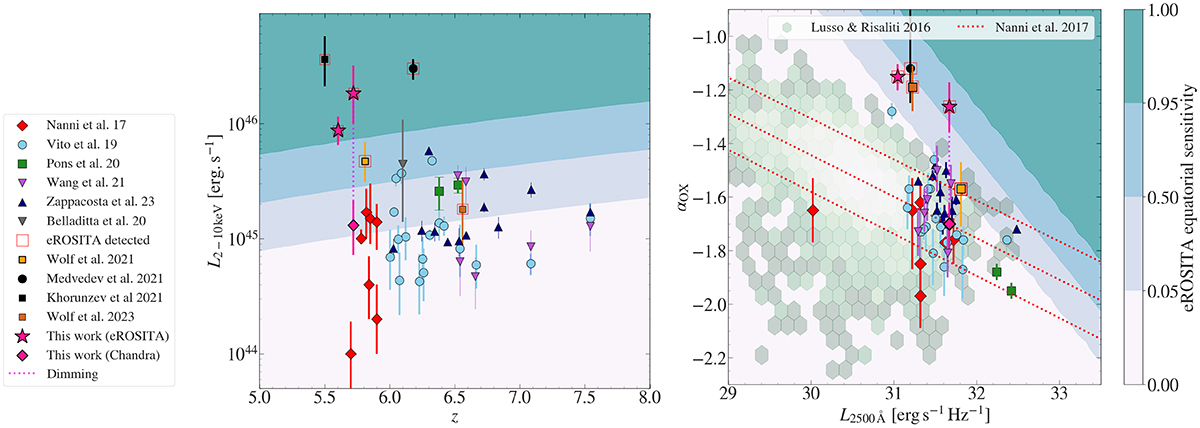Fig. 8.

Download original image
X-ray emission of the new eRASS quasars. Left panel: X-ray luminosity redshift distribution of X-ray luminous quasars from literature (Nanni et al. 2017; Vito et al. 2019; Pons et al. 2020; Wang et al. 2021b; Medvedev et al. 2020; Belladitta et al. 2020; Wolf et al. 2021, 2023; Zappacosta et al. 2023) spanning a redshift range 5.5 < z < 7.5 and a luminosity range 44 < log L2 − 10 keV/(erg/s) < 46.5. The two newly discovered quasars (displayed as pink stars). The colour gradient shows the sensitivity to a fiducial absorbed power-law with Galactic absorption of the final cumulative eRASS in the equatorial region (in fractional of sensitive area). The quasars discovered in this work lie at the luminous end of the quasar population in the early universe. We show the luminosity derived from the Chandra follow-up observation of J202040−621509. Between the eRASS1 and the Chandra observation, its luminosity has decreased by an order of magnitude. Right panel: αOX–L2500 distribution of the same sample of sources. The 1σ confidence interval of relation derived by Nanni et al. (2017) is shown by red dotted line. The hexagonal pattern shows a lower redshift AGN sample by Lusso & Risaliti (2016). The three quasars X-ray detected and newly discovered are over-luminous in the X-ray wavebands. Following its dimming observed in the recent Chandra observation, J202040–621509 is perfectly consistent αOX–L2500 relation.
Current usage metrics show cumulative count of Article Views (full-text article views including HTML views, PDF and ePub downloads, according to the available data) and Abstracts Views on Vision4Press platform.
Data correspond to usage on the plateform after 2015. The current usage metrics is available 48-96 hours after online publication and is updated daily on week days.
Initial download of the metrics may take a while.


